Click here to download this notebook.
How to add custom points to a CasysPlot
CasysPlot objects can be created both from Casys sources (data container like NadirData and SwathData) or from xarray datasets.
Plots can be merged with the method add_plot of CasysPlot objects, allowing to display customi points on top of classic CasysPlot.
This notebook will show some examples.
[1]:
import os
import numpy as np
import xarray as xr
from casys import CasysPlot, NadirData, PlotParams
NadirData.enable_loginfo()
Creating CasysPlot objects from data container
[2]:
# Using the model's computed NadirData object.
ad = NadirData.load(os.environ["DOC_MODEL"])
ad.add_raw_data(name="SIGMA0", field=ad.fields["SIGMA0.ALTI"])
ad.add_geobox_stat(name="SIGMA0 geobox", field=ad.fields["SIGMA0.ALTI"])
ad.compute()
2025-05-14 11:00:53 INFO Computing diagnostics ['SIGMA0 geobox']
2025-05-14 11:00:53 INFO Computing done.
[3]:
plot_casys_raw = CasysPlot(data=ad, data_name="SIGMA0")
plot_casys_raw.show()
[3]:

[4]:
plot_casys_geobox = CasysPlot(data=ad, data_name="SIGMA0 geobox")
plot_casys_geobox.showi()
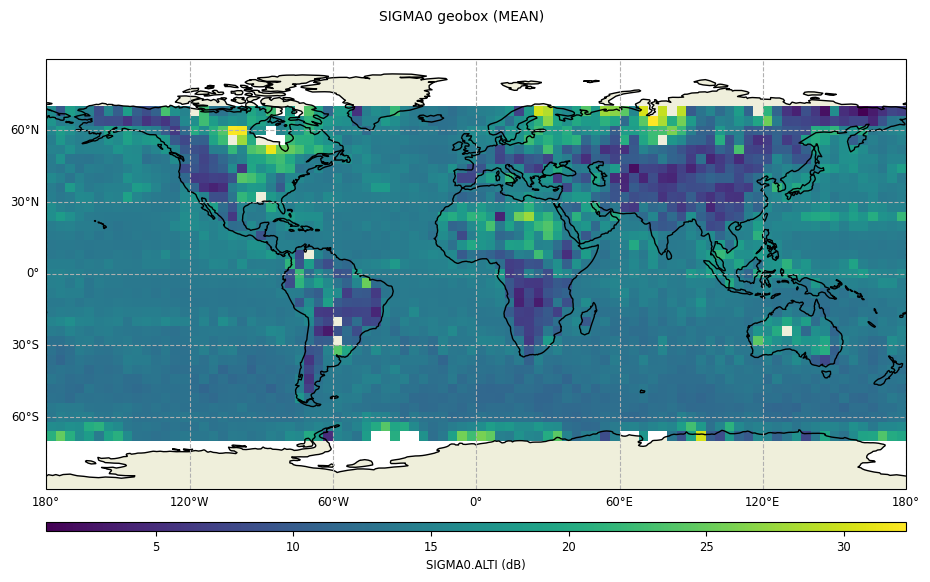
Creating CasysPlot objects with custom points
Taking a custom set of points:
[5]:
values = np.random.rand(10) * 20 + 15
time = np.arange(
np.datetime64("2019-06-03"),
np.datetime64("2019-06-08"),
np.timedelta64(12, "h").astype(np.timedelta64(1, "ns")),
)
lon = np.random.randint(low=-180, high=180, size=10)
lat = np.random.randint(low=-90, high=90, size=10)
ds_custom_points = xr.Dataset(
data_vars={
"CUSTOM_POINTS_VALUES": ("time", values),
"LONGITUDE": ("time", lon),
"LATITUDE": ("time", lat),
},
coords={"time": time},
)
A CasysPlot object can be created using the
from_array method.The
dtype parameter indicates the type of plot. Available dtypes and associated usage are detailed here.For an along time plot of custom data, use dtype="STAT_TIME":
[6]:
plot_custom_time = CasysPlot.from_array(
name="Custom Points",
data=ds_custom_points,
x="time",
y="CUSTOM_POINTS_VALUES",
dtype="STAT_TIME",
plot_params=PlotParams(
marker_style="+",
marker_size=10,
),
)
plot_custom_time.showi()
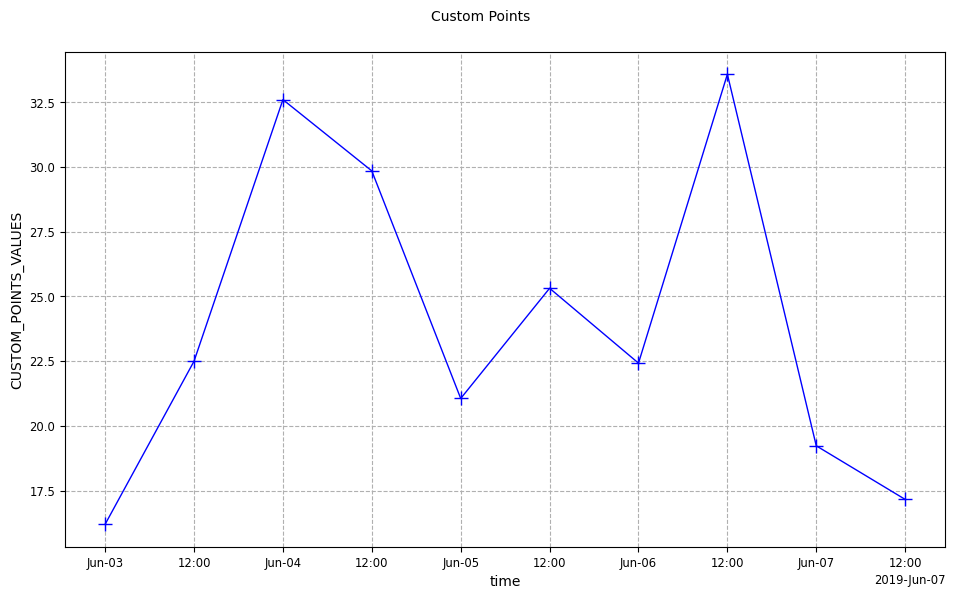
For a map plot of the custom data, use dtype="RAW_DATA":
[7]:
plot_custom_map = CasysPlot.from_array(
name="Custom Points",
data=ds_custom_points,
x="LONGITUDE",
y="LATITUDE",
z="CUSTOM_POINTS_VALUES",
time="time",
dtype="RAW_DATA",
plot_params=PlotParams(
marker_style="+",
marker_size=100,
color_map="magma",
),
)
plot_custom_map.showi()
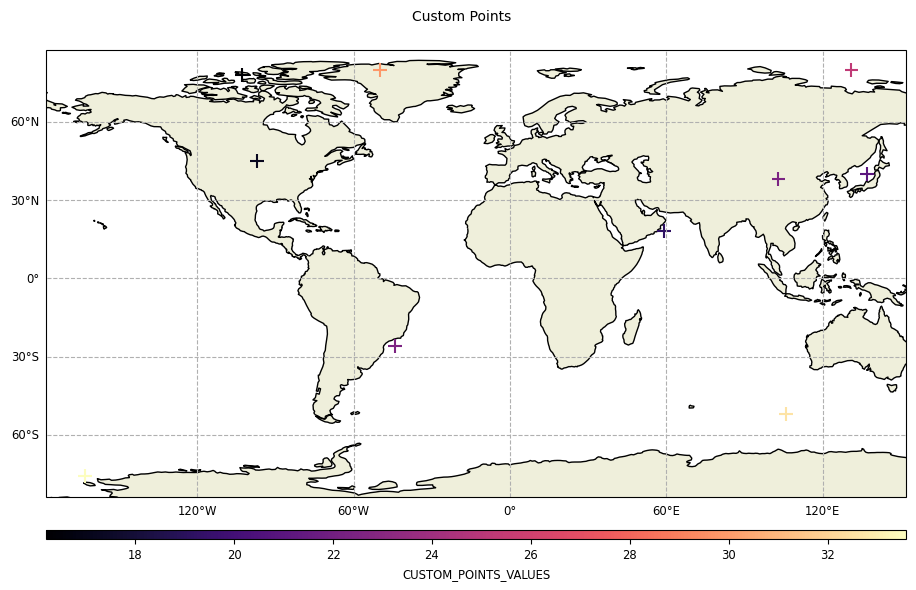
Merging CasysPlot objects
Using the add_plot method of the previously created CasysPlot objects, custom points will be added on the CasysPlot objects created from a data container:
[8]:
plot_casys_raw.add_plot(plot_custom_time)
plot_casys_raw.show()
[8]:
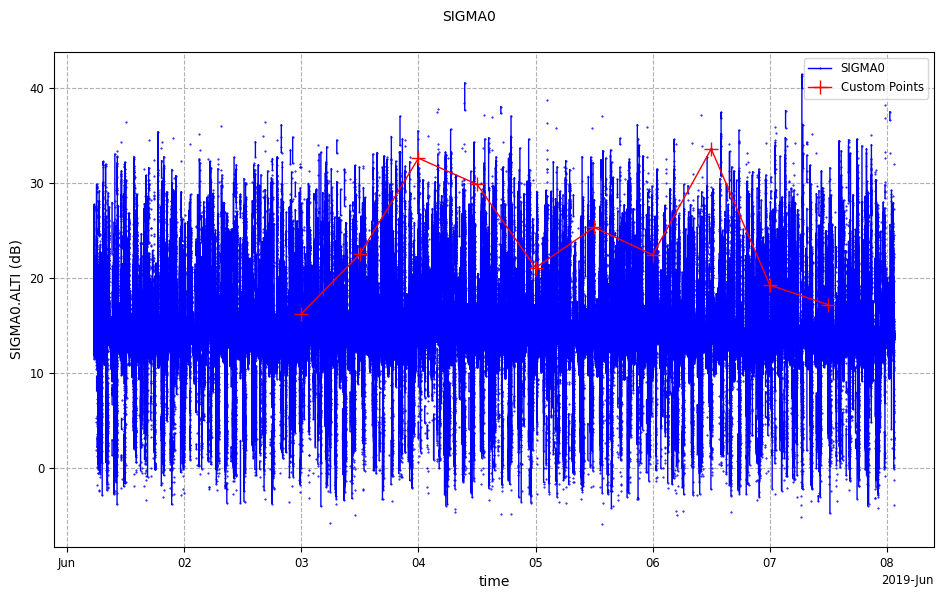
[9]:
plot_casys_geobox.add_plot(plot_custom_map)
plot_casys_geobox.show()
[9]:
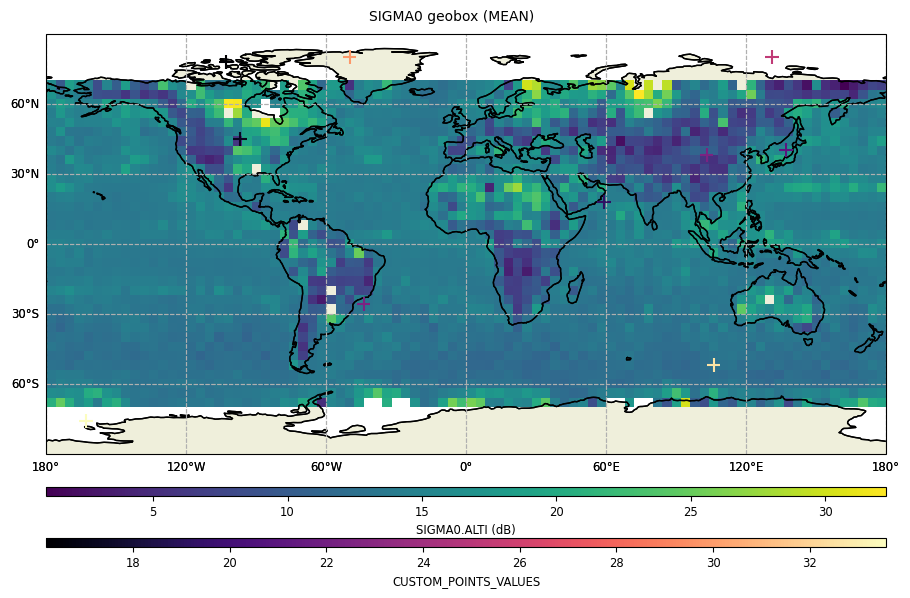
For more details on merging plots see plots merging documentation.